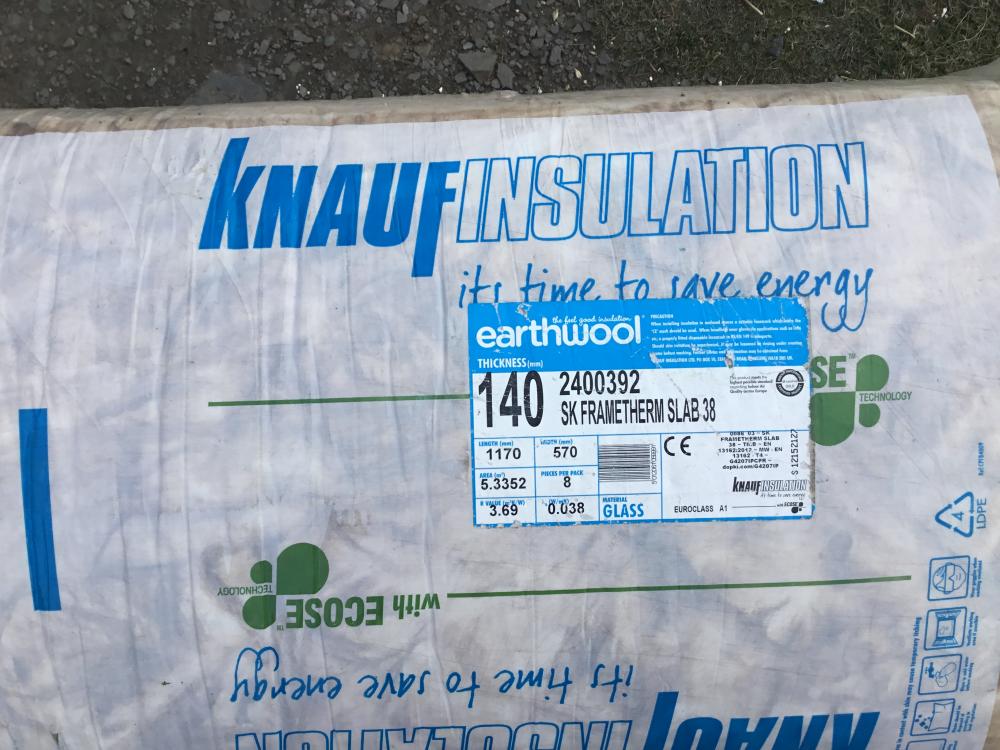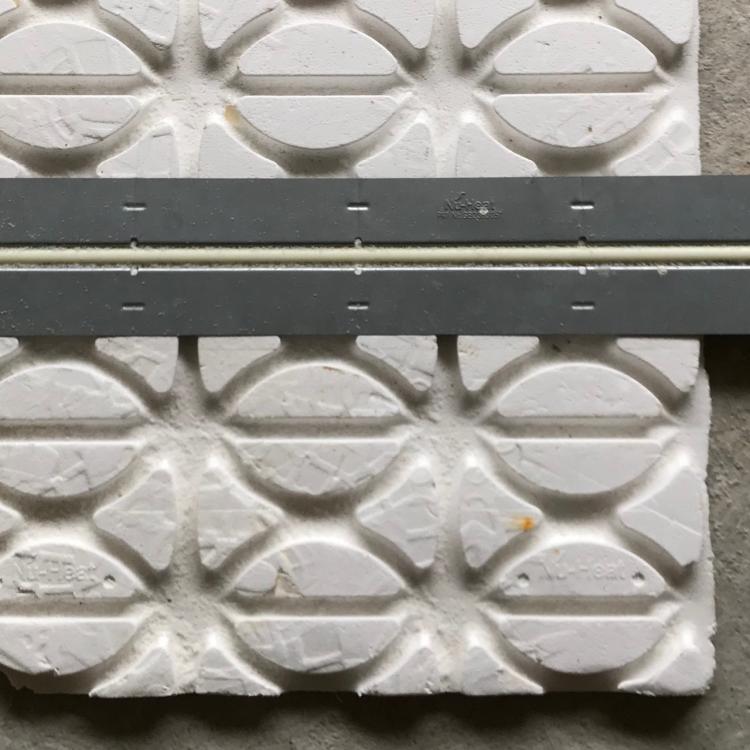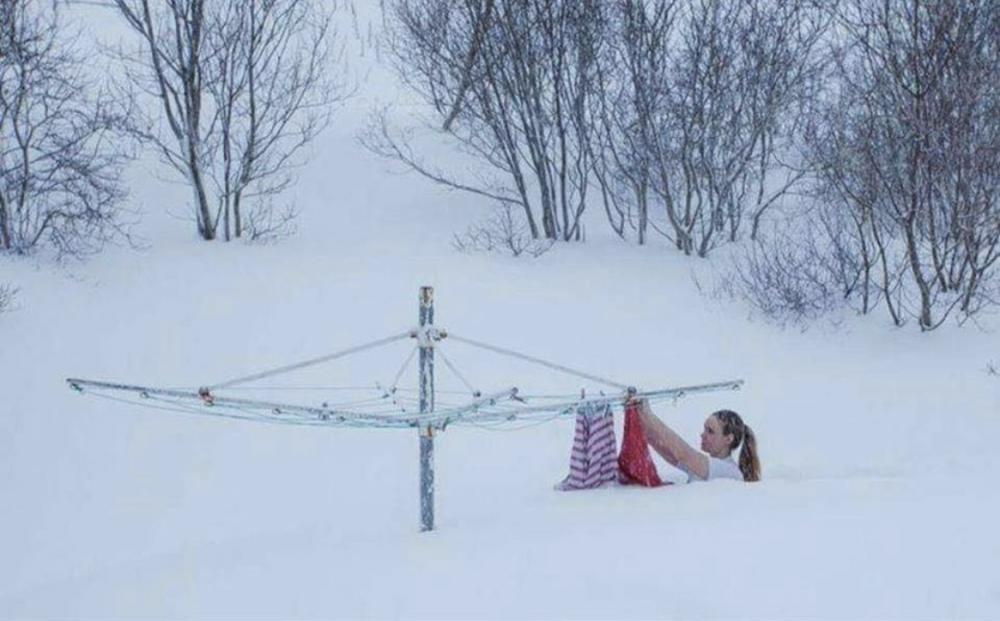Leaderboard
Popular Content
Showing content with the highest reputation on 03/01/18 in all areas
-
The BCO came yesterday for his final visit and to let me know what remaining documentation he wanted. He couldn't believe the air tightness of 0.47m3/m2.h as it was the lowest he had seen and that he usually saw results around the 4m3/m2.h. I didn't think it was especially low, but it was a point in my favour. Today I received the completion certificate, so now I can insure it as a normal house and start the VAT reclaim. I can only praise the experience I had with Building Control.6 points
-
I think they love visiting new builds when they see a someone who has busted a gut to end up with a house on a different level to the usual mass made crap.3 points
-
If they are as reliable as they say they are why would they balk at giving you a 5 year warranty - shouldn't make any difference2 points
-
We got a really expensive Mercury range cooker in blueberry colour. The enamel on the front panel got damaged by something falling on it. It left a really obvious chip so we got the cosmetic repair guy to sort it. He filled it and said it would be best to go to Mercury for the paint as it need to be fire resistant etc. My wife phoned last week and was told they would supply and fit a new panel F.O.C. We did not take out any insurance for this, so I guess it is just their policy.2 points
-
Ive been researching the many different ICF products on the market recently and have complied some data for comparison. A lot of the info is available online, but details from some manufacturers aren't so easy to find. The spreadsheet is far from complete or exhaustive, the products with the most detail are the ones I've been personally interested in and have sought quotes. Ive settled on a product now and my motivation has moved on to the next pressing decision! Hope this is some help to anyone thinking of building with ICF1 point
-
Think it was about 4-5 years ago that we had to make our final choice. Either the mcz stove or an ashp. Didn't know a sinner who had an ashp but knew a few who had the mcz stoves. The choice was pretty limited. Either 15kw or 22kw in a few of the mcz range or the much bigger pellet units upwards of 45kw. If I had to make the same choice today would I still go for biomass. Honestly I doubt it because I now know through here and ebuild much more about ashp so could have adapted my system better to suit one. But you have to make decisions along to way of every build based on what you have infront of you at the time so it will do me till it's time is up.1 point
-
(Mods please move this if there's a better home folder). We seem to be dominated here by testimonies about MBC timber frame and slab offerings and installations. Quite a few of the members here including me had bought an MBC frame and slab, and have nothing material other than praise. However, this shouldn't be an "I love MBC" forum, so I feel that we should really have the views and recommendations of members who have chosen another supplier, so that new members can have a range of suppliers to evaluate. I would be interested in these views.1 point
-
1 point
-
I’m generally less subtle than that . I find a sledgehammer works better generally if only to make me feel better!1 point
-
We sweep ours with a wide microfibre brush. Doesn't take long. Other than that, we just do an occasional mop (probably not as often as we should, if I'm honest). Seems to work fine.1 point
-
1 point
-
Time for a bit of giggle-water then I see. You must have a grin the size of Cheshire today. What's next: pop down to the BM and get some gelignite?1 point
-
Happy days, good luck to you both. I suppose it will be a sad moment pulling down the old house.1 point
-
My thoughts exactly. If they have budgeted for giving people a 5 year warranty then they shouldn’t care what date you apply. Indeed I believe the machines are delivered direct from the manufacturer and thus they shouldn’t really need you to register for the warranty at all. Thus my opinion is that the T&Cs are deliberately hidden to reduce the cost of giving out warranties.1 point
-
1 point
-
On my blog there is a picture of them now fully plumbed in and running, even the one at 275m3/h is fairly quiet, audible in the plant room but nowhere else.1 point
-
1 point
-
That is very 1960's copper and traditional build spec... The current way is through or along the joists using Hep2O or similar, transition to copper if needed for aesthetics. Most plumbers also go 50mm down these days so you can't hit the pipe with a screw or nail.1 point
-
Quite the contrary !! Standard detail for wiring follows the 17th Edition Site guide - it doesn't care if you use any type of joist, it specifies the requirements for the wiring. We did a full first fix wiring on a 3 bed 165sqm house in 3 days with PosiJoists. First fix plumbing took 3 days - 2 days for the new side, and 1 day as there is part conversion and we had to route through and around existing solid 8x2 joists. MVHR took half a day to run the ducts - no drilling required, I would hazard a guess that using I-Beams we would have added 35-50% to this, and solids would add 100% to this. Mitek, Wolf and other posi systems are used in pretty much every volume house builder estate now - its the norm not the exception1 point
-
1 point
-
Have a look at Nu-heat ( https://www.nu-heat.co.uk/underfloor-heating/floor-constructions/joisted/ ) for some UFH options. They do a a clippa plate system which can go between or over joists. I will probably be using the polystyene panel system which sits on top of the floor decking as I have already fitted the deck, increases the floor depth by 25mm. Lots of systems out there to look at.1 point
-
Not necessarily, depends on your insulation. It will be slower to react the further away from the surface it is, but depending on your house that may/may not be an issue.1 point
-
I think the thing with Miele is that their stuff works better, and in general for much longer, than that of other manufacturers. It's when thing go bad that they seem to fall apart. I beggars belief that a company can sell such a premium product and yet apparently be so bad at customer service.1 point
-
I can understand companies not wanting to take large payments by credit card but they should have the facility set up to take smaller deposits this way with the remainder paid by bacs. However, care would need to be taken as I suspect some would use a third party (izettle or similar or even PayPal) and there have been cases where when payment has been collected through a third party cover is not provided. https://www.moneysavingexpert.com/news/cards/2017/04/revealed-section-75-credit-card-protection-may-fail-due-to-payment-processing-loophole---shoppers-beware1 point
-
I was very nervous about my windows. I always try to use CC for deposits as it gives some security but window company would not take credit card. I paid them deposit of more than £15k by bacs and when a few months later we found out the manager had been sacked and he had not put my order in to window supplier, fortunately they acknowledged my money was in their bank but I was still very very worried. However we got windows in the end but it was very stressful. If you can pay by credit card then that is the best way for peace of mind.1 point
-
Me too, Peter. The disparity between SAP and PHPP is massive, and it's SAP that seems to have significant errors when dealing with houses that are very energy efficient. PHPP gave a prediction that was pretty close to our actual house performance, SAP is just bonkers when it comes to the heating requirement!1 point
-
Yes I did much the same with a free copy of, I think, SAP2005 in around 2010. It didn't help a great deal and I found using PHPP much easier. Back then they really were like chalk and cheese. I still don't understand why they don't use ACH.1 point
-
Rotor units tend to be larger (commercial) type units and need finer control as the rotation of the drum needs to be controlled to optimise heat exchange. Counterflow units are more normal in domestic settings, I actually have 2 x counterflow units in my install (see the blog) >400m2 floor area, so it should be well within the realms of feasibility to do your house with one system. The limit I suspect will be floor area as this gives a supply rate of 86.4 l/s or 311.04 m3/h. Room estracts will not approach this (unless it is all wet rooms!). Agree you don't want the unit running at full capacity but 60-70% is pretty usual, and once you have it set up and inspected you will no doubt reduce the airflow below this rate, as it is unnecessary. The calculations are based on normal (small houses) large ones don't compute. There are plenty of counterflow units in the 400-450m3/h range, giving you ample spare capacity, or the ability to run slower and more efficiently.1 point
-
1 point
-
It gets worse when it's done as you are that used to doing things around the house you kind of feel a bit lost for while. Take a well earned break for 6 months and recharge the batteries.1 point
-
Quick update, finally spoke to the valuation officer this morning and asked her to justify the band F classification. Within about 30 seconds she'd quoted a total habitable floor area of almost 40m2 more than I knew our house to be. This afternoon, after taking another look at the plans, I receive an email correcting the size and reducing the banding to E. Result!1 point
-
1 point
-
Also remember having ufh pipes in the main slab will likely alter the performance of the ufh compared to them being in a 50mm screed so factor that in. For example my ufh sits directly in my slab which ranges from 200 to 300mm thick, so i'm not expecting to be able to adjust temperature at any kind of speed at all (not fully commissined yet).1 point
-
We went for screed (Builders choice), we have 250mm concrete slab (Ground Floor) and 250mm concrete beams (First Floor). Then 50mm liquid screed with the UFH pipes in, thicker on the First Floor due to camber of the 8m span beams, then another 50mm liquid screed on top (ducted electric cables in this one). Teh screed was laid in 2 runs on advice to improve curing. It is then topped with a microscreed finish this is the final floor surface (currently doing the Ground Floor). I know completely over the top, but it works, the builders had structural concrete to work from for a long time, the screed was next, then plastering and the Micro Screed is the final work, just finishing off the second fix to go and the wood work (doors, skirting,...)1 point
-
We have polished concrete over a structural slab. We had to go for 65mm rather than the 75mm minimum suggested, and have ended up with a couple of cracks. I haven't tried filling them yet, but they aren't the end of the world. A few things: As I said, the minimum is 75mm - thicker is recommended. That's a lot of concrete if you already have a structural slab underneath, but hey, concrete looks cool! The polishers can only get so close to walls. We did ours before plaster and skirting boards. Even so, there's a clear region along every wall that was polished by hand tools rather than the big grinders, and this does look different, and in a few places is slightly undulating. If you're happy with this (we are - we think it adds character), it isn't an issue. If you aren't happy with a different-looking edge, then the pouring and polishing needs to be done before the frame goes up. That allows the whole surface to be polished, so you get edge to edge consistency. You then have the not-insignificant problem of protecting the floor for the rest of the build, including while the frame goes up. Whether you get polished concrete before or after the frame goes up, you will be protecting it for a long time. We used Correx throughout the ground floor. Even though we taped it at every edge, we can still see dark lines in some areas where the joins were, two years after moving in. Also, dirt and dust finds its way in, and can cause scratches. Polished concrete companies get their concrete from local suppliers. In our case, we wanted to see a small amount of exposed aggregate visible after polishing. We really didn't want black/dark aggregate, but the company couldn't/wouldn't make any guarantees about aggregate colour. Was fine in the end, but a risk, albeit slight (I've never seen black aggregate anywhere near where I live. We have numerous sand and gravel pits nearby and they all have light stone). Concrete can be tinted to whatever colour you like. We wanted something a little darker than one of the standard tints and the company was happy to come up with something custom. Again, it was to our risk whether we were happy with the colour when it was down - if the concrete had been yellower, for example, that would have changed the colour in a slightly browner direction, but in the end we got a nice warm dark grey along the lines we were expecting. Concrete is easy to keep clean, but even with a sealer it can stain. My wife accidentally left a bin bag on the floor overnight once, and some sort of fluid leaked out. We now have a large, permanent dark stain in the kitchen that's a bit unpleasant. I personally wouldn't have concrete in a kitchen again under any circumstances. Would I go for concrete again? Not sure. I suspect that large-format tiles are a hardier long-term solution, but let's face it, they aren't polished concrete! If I had my time again, I think I'd perhaps tile the kitchen and have concrete everywhere else. One thing I really like is how it feels underfoot in summer. Winter... less so, especially when the ASHP is on the fritz so the slab is unheated!1 point
-
1 point
-
Had a BIG barney with the missus years ago and punched a door in frustration. Even bigger row ensued! Still fuming off I went to Wickes to get a replacement. I took the front passenger seat headrest off to get the cheap sapele door in the back of the car. Driving too fast I took a sharp left hand turn and the door slid across, pinning me against the driver's window by the neck. I couldn't steer so carried on into the hedge!1 point
-
We have the MBC slab with the UFH in it - we asked to use our own pipe and not MBC supplied pipe but they put it in for us and we got a reduction in our mbc price for supplying our own pipe, they also fitted it to our designed spec for spacing and zones. We have used the German Robbens pipe and manifolds. The Robbens system is very good with pipe that has an aluminium inner so very robust. Robbens design was good and they were really on the ball. We got our UFH and MVHR from them and used a recommended installer, he is brilliant, a specialist in passiv style stuff. He has done all our UFH and MVHR and put in the gas boiler and hot water tanks and hot and cold feeds to our desired points around the house ready for our bathroom plumbers to first fix into. He specified the plumbing kit (ex mvhr/ufh) and I bought it all at best prices I could get on line so no middle man cut. All our h&c pipes are in the roof and now buried in masses of mbc pumped insulation, so we dont have roof space just insulation LOL We chose Robbens for our UFH/MVHR after having quotes from 3 others......they also do some very stylish magnetic covers in glass for the mvhr room vents much nicer than the plastic ones that are the norm and I didnt find anyone else who offered such a stylish product1 point
-
Looks like the Spanish/Portuguese imported direct system have risen above the parapet again................ Last time a couple of companies tried importing these, they got into hot water with the MCS, and had they approval withdrawn. In essence, they are just an ASHP, with no fan on the external evaporator, and with that evaporator formed as a flat plate, rather than an air-blown finned array. The interesting thing is that a lot were sold in Ireland a few years ago, and the owners were pleased with them. I wanted to fit a double panel unit as our hot water system, with the panels mounted on the East wall. I went down to Southampton to see the importer, who had a demo system running, and it was pretty impressive looking. The really big show stopper is that there was zero technical data. Not even the manufacturer (in Portugal) could provide really basic info on COP. In theory, the efficiency should be higher at high DHW temperatures, because of the direct exchange between the refrigerant and the DHW, but the manufacturers were really cagey about letting me have any data. In the end, the two companies I spoke with both dropped the product, and refused to supply it to the UK market, just because they couldn't get data from the manufacturer. This was the last email I had about these "thermodynamic" systems, back in March 2013:1 point
-
We have the same TF style as Jack, 400m2 over 4 floors. Basement has no heating but is very comfortable as all the plant is down there plus TV, xbox etc, all kicking out heat and the 300mm concrete walls are externally wrapped in 200mm EPS (300mm under the floor). UFH on ground floor only (has to penetrate nearly 50mm of OSB/ply and then 2-3mm resin) and it's fine, even in the recent cold weather - currently set to 21o air temp on the stat. No UFH on first floor aside from 100W/m2 electric mats under tiles in the three bathrooms ( about 3-4m2, set to 24o, timed) plus wet towel rads also on timers - rooms are on the cooler side but comfortable, usually around 19 degrees. Our plan B would have been to tap into the towel rad circuits to add room rads if needs be but we all seem to be fine. Loft rooms can be a bit cooler in the evening or on dull days but we're never in them and have a Dyson fan for guests if they need warmed up a touch - loft rooms are liable to overheat if the Velux blinds are not down on sunny days though. Another vote for MVHR having a slight cooling effect but overall I'm pretty happy with the outcome. Note, It's not easy running UFH over a pozi joist floor and we had quite a bit of head scratching getting it down on the ground floor originally as you can't notch the joists for the loops and it's impossible to thread 100m of pex-al-pert through the webs. We cut long slots in the 22mm OSB deck to allow the pipes to cross over the joist ends, knowing that we'd be dropping another 21 mm of ply on top for the resin. I know HerbJ found an acoustic floor product for his upper floors that allowed him to run UFH up there too but it wasn't cheap and I believe he put it in mainly for resell purposes.1 point
-
Ours is the same, upstairs is consistently about 1/2 to 1 deg C cooler than downstairs. I too think it's the MVHR.1 point
-
With U-values of 0.10 downstairs floor, 0.11 roof, and 0.12 walls, and lots of double height spaces, I've been surprised at the way heat doesn't actually seem to move upstairs in our house. Downstairs is always slightly warmer than upstairs (and especially the bedrooms) in the colder months. I assume this is to do with the slight heat loss through the MVHR, which is made up for downstairs by the UFH, but isn't upstairs. If I were doing this all again, I'd definitely include UFH in the bathrooms, just to take the chill off the tiles. I'm currently contemplating retrofitting an IR panel to each bathroom ceiling. Programming a quick burst of that before our usual shower time in the morning should be enough to take off the chill without chewing through too much energy.1 point





.jpg.c21f3ac78c9b7efd90cbdcb312744dc5.thumb.jpg.7adcad4c0e384f5ecd7d56b0618df6e5.jpg)












